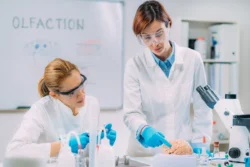Bioremediation is revolutionizing how we tackle wastewater pollution. It’s green and budget-friendly, too. How does it work? Microorganisms are put to use, breaking down nasty pollutants. This process converts wastewater into something safer that can be used again.
As more businesses sprout up and our freshwater supply shrinks, bioremediation becomes even more crucial. Its role in reducing pollutants while conserving the environment highlights its potential to reshape wastewater management.
The Science Behind Bioremediation
Bioremediation is a process where microorganisms like bacteria, fungi, and algae become cleaning agents. They break down contaminants in wastewater, transforming them into simpler, safe compounds. We can then safely discharge the cleansed water or even reuse it.
Think of bioremediation as nature’s recycling system—an inventive and eco-friendly way to handle industrial sewage. Scientists tirelessly work on improving how these little life forms hog down specific pollutants—an exciting glimpse at our pollution-fighting future.
Benefits of Bioremediation in Wastewater Treatment
Bioremediation rocks for being environmentally friendly. No harmful waste gets dropped into our ecosystem, unlike with chemical treatments. Additionally, it’s easier on the pocket. It cuts down costs spent on pricey chemicals and processes that suck up a lot of energy.
Better yet, bioremediation promotes a cycle where treated water is recovered and reused. This aligns perfectly with worldwide efforts to promote green technology and shrink our ecological footprints, making it an attractive choice for managing wastewater.
Practical Applications in Industries
Bioremediation is catching on in sectors like farming, oil refining, and manufacturing. These sectors use it to clean their wastewater. In farms, for example, bioremediation can remove pesticides and fertilizers from runoff that could foul up our precious water supply.
Oil refineries also love this method as they can safely dispose of hydrocarbons with its help. These real-world examples show how versatile bioremediation truly is. We see it adapt across different industries, showing us just how crucial a role it plays in current wastewater treatment schemes.
Microorganisms and Their Role in Bioremediation
Microorganisms are at the heart of bioremediation’s wastewater treatment. Bacteria, like Pseudomonas and Bacillus, excel at breaking down organic pollutants. Fungi and algae help cycle nutrients and remove heavy metals.
These microscopic organisms team up to purify dirty water thoroughly. By capitalizing on what they naturally do best, eating all kinds of gunk, we see bioremediation shaping up as a trusty ally tackling our rising woes about polluted waters.
Wrapping Up
Bioremediation showcases how nature can solve problems that humans create. As various industries push for more earth-friendly ways, the role of microorganisms in treating wastewater underlines bioremediation’s power to pave a cleaner and sustainable path ahead.
By welcoming this technology into our lives, we safeguard water resources while reducing environmental harm, which is a win-win move that grants lasting perks for planet Earth!






